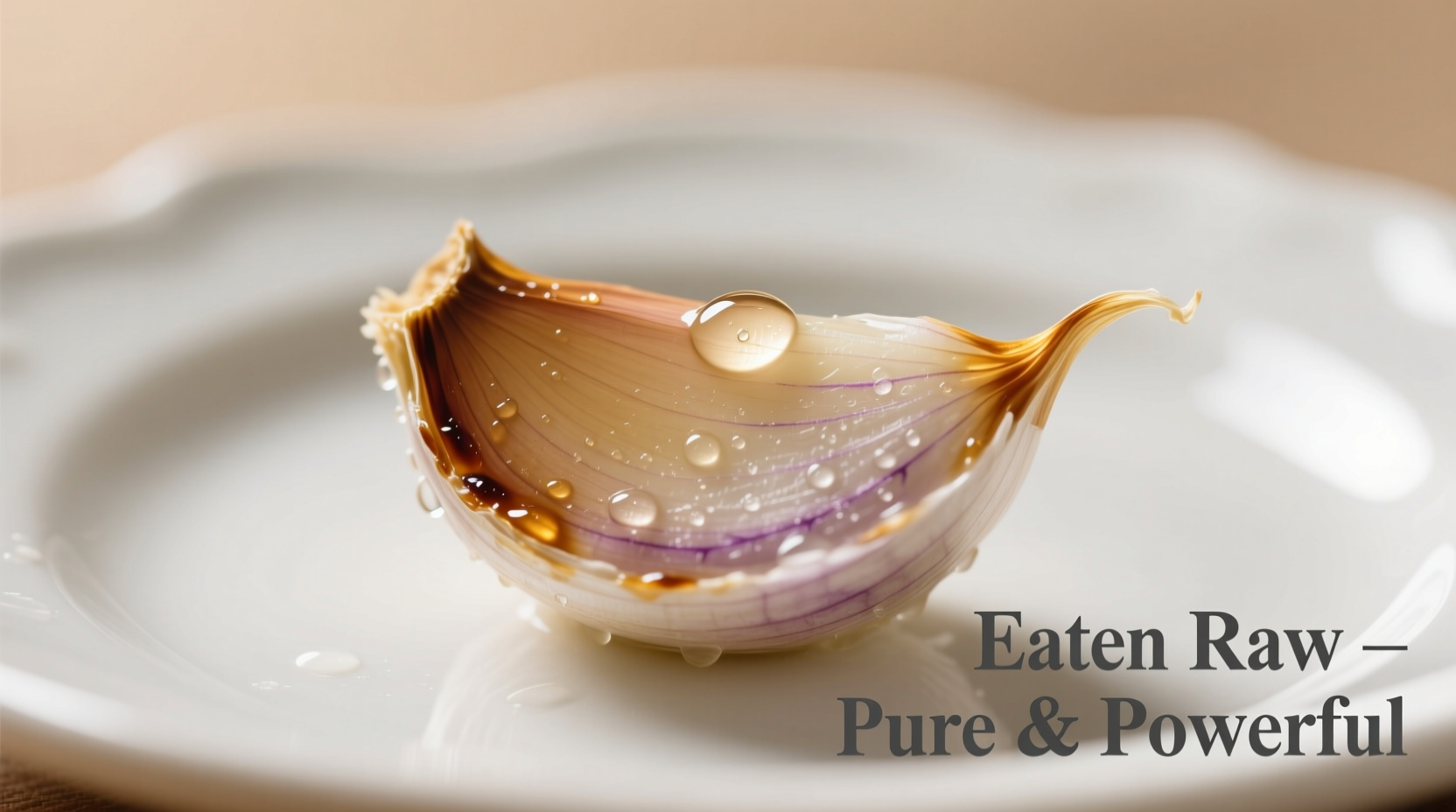The Science Behind Raw Garlic's Potency
When you crush or chop raw garlic, an enzyme called alliinase converts alliin into allicin—the powerful compound responsible for garlic's distinctive aroma and most health benefits. Cooking significantly reduces allicin content, with studies showing up to 90% loss when garlic is boiled for just 6 minutes. This biochemical reaction happens most effectively at room temperature, making raw consumption the optimal method for maximizing garlic's therapeutic properties.

Proven Health Benefits of Raw Garlic Consumption
Raw garlic delivers concentrated health advantages that have been validated through clinical research. Unlike cooked garlic, the unprocessed form preserves the full spectrum of bioactive compounds that interact with your body's systems.
| Health Benefit | Scientific Evidence Level | Recommended Daily Amount |
|---|---|---|
| Blood pressure reduction | Strong (Multiple RCTs) | 1-2 cloves |
| Cholesterol management | Moderate (Systematic reviews) | 2-3 cloves |
| Immune system support | Emerging (Preliminary studies) | 1 clove daily |
| Antimicrobial properties | Strong (In vitro studies) | As needed for topical use |
According to research published in the Journal of Nutrition, raw garlic consumption shows significantly greater cardiovascular benefits compared to cooked garlic. The National Center for Complementary and Integrative Health (NCCIH) confirms that raw garlic provides the highest concentration of organosulfur compounds responsible for its therapeutic effects (nccih.nih.gov/health/garlic).
When Raw Garlic Might Not Be Right for You
While beneficial for most people, raw garlic consumption has important limitations. Understanding these context boundaries ensures safe incorporation into your diet:
- Medication interactions: Raw garlic may enhance blood-thinning medications like warfarin, increasing bleeding risk (per FDA drug interaction guidelines)
- Digestive sensitivity: People with IBS or GERD often experience exacerbated symptoms from raw garlic's irritant properties
- Pre-surgical considerations: Medical professionals recommend discontinuing raw garlic consumption 7-10 days before surgery due to bleeding risks
- Pregnancy: While moderate consumption is generally safe, excessive raw garlic intake may stimulate uterine contractions
Optimal Raw Garlic Consumption Techniques
Maximize benefits while minimizing discomfort with these evidence-based methods:
- Crush and wait: Chop or crush garlic and let it sit for 10 minutes before consumption to maximize allicin formation
- Pair with food: Consume raw garlic with other foods to reduce digestive irritation
- Start small: Begin with 1/4 to 1/2 clove daily and gradually increase to assess tolerance
- Timing matters: Morning consumption may reduce potential heartburn compared to evening intake
- Preparation methods: Mix minced raw garlic with honey, olive oil, or lemon juice to mellow the harshness
The American Heart Association notes that while garlic shows promise for cardiovascular health, it should complement—not replace—standard medical treatments for heart conditions (heart.org/cholesterol).
Raw vs. Cooked Garlic: Making the Right Choice
Understanding when to use raw versus cooked garlic helps optimize both health benefits and culinary enjoyment:
- Use raw garlic when: Seeking maximum medicinal benefits, making salad dressings, or creating garlic-infused oils
- Cook garlic when: Creating sauces, soups, or roasted dishes where milder flavor is preferred
- Partial cooking technique: Add garlic toward the end of cooking to preserve some allicin while reducing harshness
Research from Harvard T.H. Chan School of Public Health indicates that while cooking reduces allicin content, it creates different beneficial compounds, suggesting both raw and cooked garlic offer unique health advantages (hsph.harvard.edu/nutritionsource/garlic).
Common Questions About Raw Garlic Consumption
Understanding these frequently asked questions helps make informed decisions about incorporating raw garlic into your diet:











 浙公网安备
33010002000092号
浙公网安备
33010002000092号 浙B2-20120091-4
浙B2-20120091-4